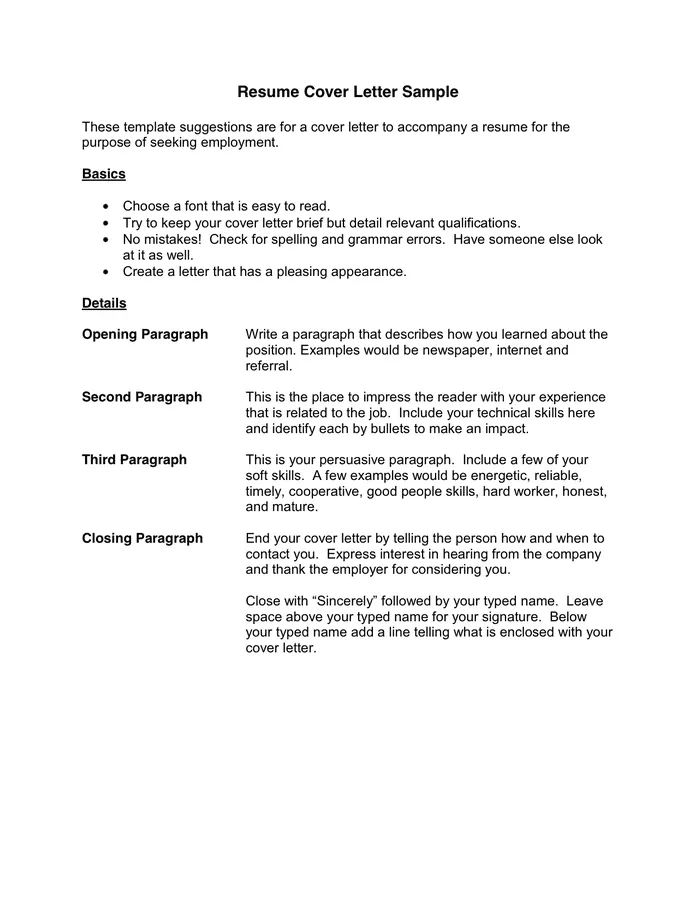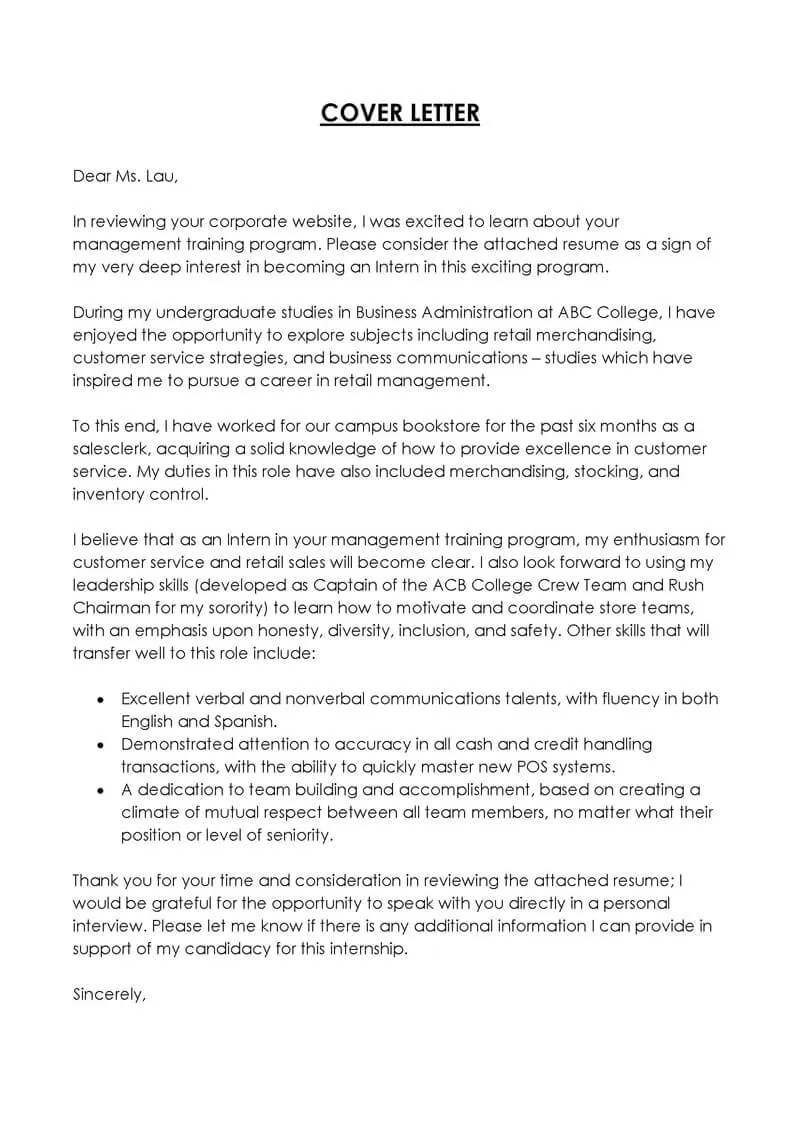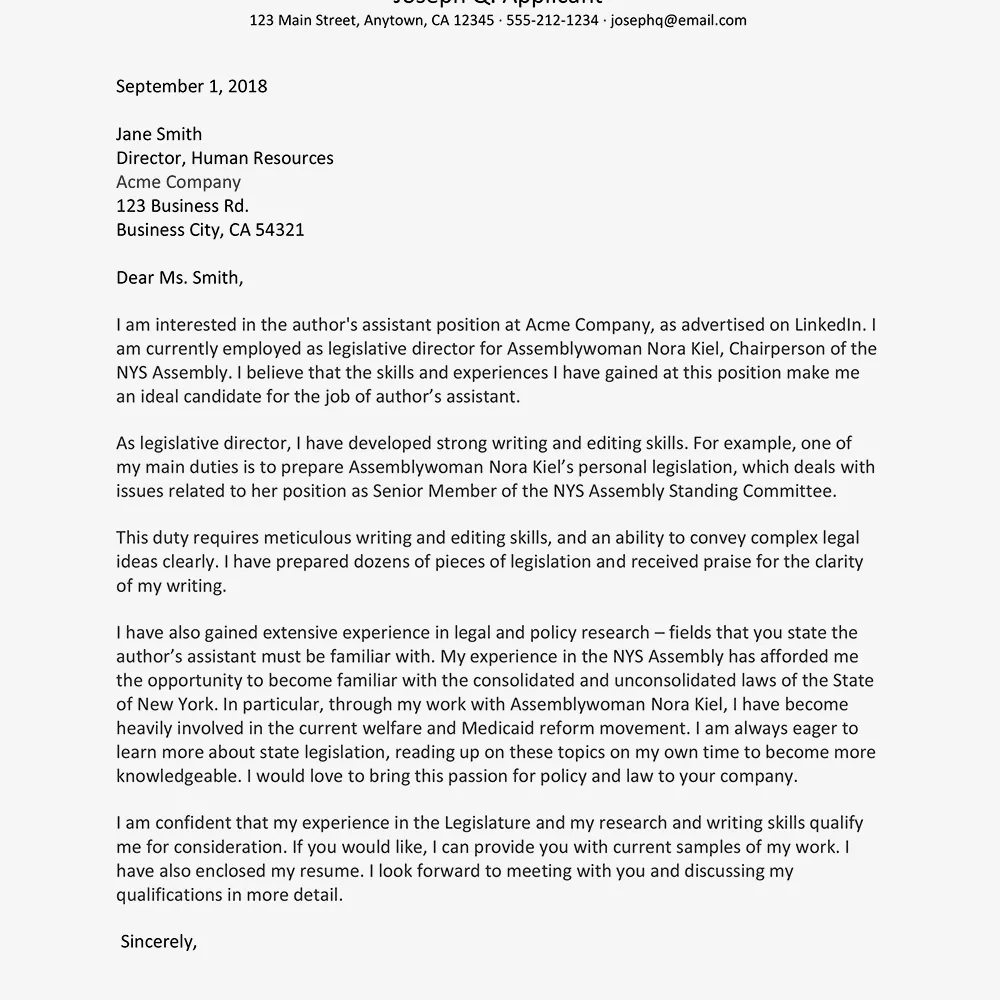What is a Cover Letter
A cover letter is a crucial document that accompanies your resume when applying for a job. It serves as an introduction, providing a personalized overview of your skills, experience, and qualifications. Unlike a resume, which provides a factual summary, a cover letter allows you to elaborate on specific achievements, express your enthusiasm for the role and company, and demonstrate your unique value proposition. It’s your chance to make a strong first impression and persuade the hiring manager to review your resume more closely. A well-crafted cover letter can significantly increase your chances of landing an interview.
Why You Need a Cover Letter
In today’s competitive job market, a cover letter is often essential. It allows you to stand out from the crowd by showcasing your personality and enthusiasm. A well-written cover letter provides context to your resume, explaining why you’re the perfect fit for the specific role and company. It gives you the opportunity to highlight your most relevant skills and experiences, making it easier for the hiring manager to see your potential. Furthermore, it demonstrates your communication skills, attention to detail, and professionalism. Including a cover letter demonstrates your commitment to the role and provides the employer with insight into your written communication abilities.
When Cover Letters Are Essential

While some job applications may not explicitly require a cover letter, it’s generally advisable to include one unless the job posting states otherwise. A cover letter is particularly important when applying for positions where you want to demonstrate a strong interest or when the job description specifically asks for one. If you’re applying for a role in a field that values communication skills or requires creative thinking, a cover letter is essential. Also, if you have gaps in your employment history or are changing careers, a cover letter can help you address these issues and explain your suitability for the position. Consider the cover letter as a tool to provide context, and express your enthusiasm for the position.
Cover Letter vs Resume
The resume provides a concise overview of your skills, experience, and education. It’s a factual document that presents your qualifications in a structured format. The cover letter, on the other hand, is more narrative. It allows you to elaborate on specific experiences, explain how your skills align with the job requirements, and express your interest in the company. While your resume highlights what you’ve done, the cover letter explains why you’re a good fit for the job and how your skills will benefit the employer. The resume offers a static snapshot of your qualifications while the cover letter provides the context, enthusiasm and demonstrates your communication skills.
Top 5 Tips for Writing a Cover Letter
Tip 1 Research the Company and Role

Before writing your cover letter, thoroughly research the company and the specific role. Understand the company’s mission, values, and recent news. Tailor your letter to demonstrate your understanding of their needs and how your skills can contribute to their goals. Explore the job description in detail, identifying the key requirements and qualifications. This research will enable you to showcase your genuine interest and tailor your letter to the specific needs of the employer. By demonstrating that you’ve taken the time to understand the company and role, you’ll make a stronger impression.
Tip 2 Tailor Your Letter
Avoid using generic cover letters. Customize each letter to match the specific job and company you are applying to. Reference the job description and highlight the skills and experiences that are most relevant to the position. Show the employer how your qualifications align with their needs. Customize your letter to showcase specific achievements that are directly related to the role. This level of personalization demonstrates your genuine interest and increases your chances of getting noticed. Tailoring shows that you’ve taken the time to understand the company’s needs and the specific role requirements.
Tip 3 Highlight Your Key Skills
Focus on the skills and experiences that are most relevant to the job. Use the job description as a guide and highlight the qualifications the employer is seeking. Provide specific examples of how you have demonstrated these skills in the past, using the STAR method (Situation, Task, Action, Result) to showcase your achievements. Quantify your accomplishments whenever possible to demonstrate your impact. For example, instead of saying you improved customer satisfaction, say you improved customer satisfaction by 15% through the implementation of a new feedback system. Make sure the skills you choose to highlight are pertinent to the role and demonstrates your ability to perform the tasks required.
Tip 4 Showcase Your Personality

While maintaining a professional tone, let your personality shine through. Show your enthusiasm for the role and the company. Explain why you are excited about the opportunity and what makes you a good fit for the team. Use a friendly and engaging writing style to make your letter more appealing. Showcasing your personality helps the hiring manager get a sense of who you are and whether you would be a good cultural fit for the company. This allows the hiring manager to connect with you on a personal level. Avoid being overly formal or stiff and let your passion for the job come through.
Tip 5 Proofread and Edit
Before submitting your cover letter, proofread it carefully for any errors in grammar, spelling, and punctuation. Typos and grammatical errors can make a negative impression, so ensure your letter is polished and error-free. Read your letter aloud to catch any awkward phrasing or sentences that don’t flow well. Ask a friend or family member to review your letter for additional feedback. A well-written cover letter demonstrates your attention to detail and professionalism. By investing the time to proofread and edit, you can ensure that your cover letter reflects your best qualities.
Cover Letter Examples
Example 1 Entry-Level Position

An entry-level cover letter should focus on your skills, education, and any relevant experience. If you’re a recent graduate, highlight your academic achievements and any internships or projects. Emphasize your willingness to learn and your enthusiasm for the field. For example, if you are applying for a marketing assistant position, highlight any marketing coursework, relevant projects, and your interest in marketing principles. Show that you are eager to begin your career and make a contribution to the company’s growth.
Example 2 Experienced Professional
For an experienced professional, a cover letter should highlight your accomplishments and how you have contributed to the success of past employers. Showcase your expertise and demonstrate the value you bring to the table. Use specific examples to illustrate your skills and quantify your achievements whenever possible. Focus on how your experience aligns with the job requirements and the needs of the company. For example, if you are applying for a project management role, highlight the successful completion of projects, your ability to manage teams, and your experience with project management methodologies.
Example 3 Career Change
If you’re changing careers, your cover letter should explain why you are making the transition and how your transferable skills can benefit the new role. Focus on the skills you have acquired in your previous roles that are relevant to the new career path. Explain your passion for the new field and your motivation for making a change. For example, if you are transitioning from a sales role to a marketing role, highlight your communication skills, ability to build relationships, and experience with customer interactions. Tailor your letter to demonstrate how your experience and transferable skills align with the job description.
Formatting Your Cover Letter

Contact Information
At the top of your cover letter, include your contact information: your full name, phone number, email address, and possibly your LinkedIn profile URL. Make sure your contact information is accurate and up-to-date. Use a professional email address, and ensure your voicemail is set up and ready to receive messages. The contact information should be easily accessible, making it easy for the hiring manager to reach you.
Salutation
Use a professional salutation, such as “Dear Mr./Ms./Mx. [Last Name].” If you don’t know the name of the hiring manager, try to find it by researching the company or looking at the job posting. If you can’t find a specific name, use a general salutation like “Dear Hiring Manager.” Avoid generic salutations like “To Whom It May Concern,” as they can make your letter seem impersonal. Always spell the name correctly to show you paid attention to detail.
Body Paragraphs

The body of your cover letter should consist of three or four paragraphs. In the first paragraph, state the position you are applying for and how you learned about it. In the subsequent paragraphs, highlight your relevant skills and experience, providing specific examples. Explain why you are a good fit for the role and why you are interested in the company. Keep the paragraphs concise and focused. The body paragraphs are the core of your cover letter, providing a persuasive narrative of your qualifications.
Closing and Signature
In your closing paragraph, thank the hiring manager for their time and consideration. Express your enthusiasm for the opportunity and reiterate your interest in the position. Include a call to action, such as “I look forward to hearing from you.” End your letter with a professional closing, such as “Sincerely,” or “Best regards,” followed by your typed name. If you’re submitting a printed letter, leave space for your signature above your typed name.
Common Cover Letter Mistakes to Avoid
Generic Letters
Avoid sending out the same cover letter to every job application. Generic letters lack the personalization and attention to detail that hiring managers are looking for. Always tailor your cover letter to the specific job and company. Show that you have researched the role and understand the requirements. Generic letters will not make a favorable impression.
Typos and Grammatical Errors
Typos and grammatical errors can make your cover letter look unprofessional. They create a negative impression of your communication skills and attention to detail. Always proofread your cover letter carefully before submitting it. Read it aloud, and consider asking a friend or family member to review it for you. Errors can easily cause the hiring manager to set your resume and cover letter aside.
Lack of Enthusiasm
A cover letter should demonstrate your enthusiasm for the job and the company. Avoid sounding indifferent or unmotivated. Express your genuine interest in the position and explain why you’re excited about the opportunity. Convey your passion for the field and your willingness to contribute to the team. Letting your enthusiasm shine through shows that you are genuinely interested in the role.
Ignoring the Job Description
Make sure your cover letter directly addresses the requirements outlined in the job description. Highlight the skills and experiences that are most relevant to the position. Show the hiring manager how your qualifications align with their needs. Failing to address the job description shows a lack of attention to detail. Tailor your letter to the specific needs of the employer.
Conclusion
Writing a compelling cover letter is essential for making a strong impression and landing your dream job. By following the tips outlined above – researching the company and role, tailoring your letter, highlighting your key skills, showcasing your personality, and proofreading carefully – you can create a cover letter that effectively showcases your qualifications and persuades the hiring manager to review your resume. Remember that the cover letter is your chance to shine and make a positive first impression. With a well-crafted cover letter, you’ll be well on your way to job search success.
